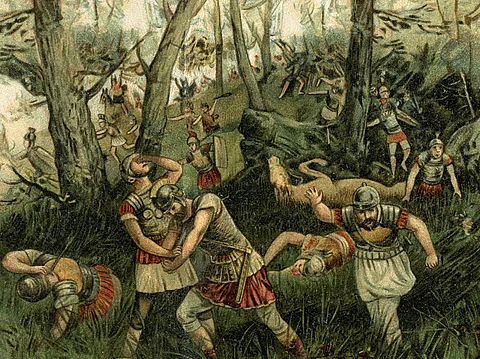

The Germanic peoples of Northern Europe, the archenemies of the Roman Empire, used narcotic stimulants in their battles against the legions of Rome, a new study has found.
These stimulants were made from a wide range of substances including poppy, hops, hemp, henbane, belladonna and various fungi. Germanic peoples had access to these substances and these were used as stimulants by either dissolving them in alcohol or in the form of powders.
The use of narcotic substances such as opium was well-documented in ancient Greece and Rome. But the use of such substances among the Germanic peoples on the northern frontier of the Roman Empire has not been documented till now. It was assumed that barbarian peoples like the Germanic tribes used only alcohol as an intoxicant.
Archaeologist Andrzej Kokowski and biologists from Maria Curie-Sklodowska University in Lublin, Poland found small, spoon-shaped objects at 116 sites in modern-day Scandinavia, Germany and Poland. Some 241 in number, these objects were found primarily in marsh sites and graves, along with items used in warfare.
“The objects have handles, mostly between 40 and 70mm long, and either a concave bowl or flat disk measuring 10 to 20mm across. They were attached to a man's belt, but played no role in its functioning,” an article on aggregator site Phys.org noted.
Stimulants have long been used in battle by soldiers to motivate themselves or to reduce fear and stress caused by warfare.
The experts deduced that the objects could have been dispensers of stimulants. The warriors may have used them to take the right dose of stimulant and reduce the possibility of an overdose.
The stimulants used by Germanic peoples could have also been utilised as medicine or in rituals, according to the experts. Considerable knowledge and organisation would have been needed to supply the quantity and type of stimulants needed, they added.
In a narcotic trance, or stimulants in Germanic communities of the Roman period was published in the journal Praehistorische Zeitschrift.